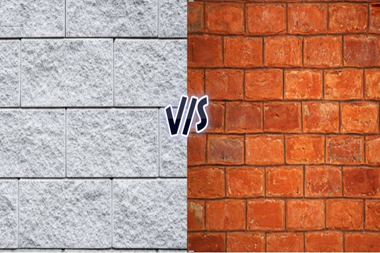
AAC Blocks vs Traditional Bricks: Which is Better for Your Building Project?
Introduction
When planning a construction project, one of the critical decisions to make is the choice of building materials. Traditionally, bricks have been the go-to material, but Autoclaved Aerated Concrete (AAC) blocks are gaining popularity. This blog will compare AAC blocks with traditional bricks to help you make an informed choice for your next building project.
Weight and Ease of Handling
- AAC Blocks: These blocks are significantly lighter than traditional bricks, making them easier to handle and transport. This reduces labor costs and speeds up the construction process.
- Traditional Bricks: Heavier and more cumbersome, traditional bricks require more effort and time to move and place.
Thermal Insulation
- AAC Blocks: Known for their excellent thermal insulation properties, AAC blocks help maintain a stable indoor temperature, reducing the need for additional heating or cooling.
- Traditional Bricks: While they provide some level of insulation, bricks are not as effective as AAC blocks in regulating temperature.
Sound Insulation
- AAC Blocks: The porous structure of AAC blocks offers superior sound insulation, making them ideal for residential and commercial buildings in noisy areas.
- Traditional Bricks: Offer decent sound insulation but fall short compared to the performance of AAC blocks.
Fire Resistance
- AAC Blocks: Highly fire-resistant, AAC blocks can endure temperatures up to 1600°C, providing enhanced safety.
- Traditional Bricks: While fire-resistant to a degree, traditional bricks do not offer the same level of protection as AAC blocks.
Environmental Impact
- AAC Blocks: Manufactured using eco-friendly processes, AAC blocks generate minimal waste and use non-toxic materials, making them a sustainable choice.
- Traditional Bricks: The production of bricks often involves high energy consumption and emits significant amounts of carbon dioxide, contributing to environmental pollution.
Cost
- AAC Blocks: While the initial cost may be higher, the savings in labor, transportation, and energy costs make AAC blocks more cost-effective in the long run.
- Traditional Bricks: Generally cheaper upfront, but the associated costs of labor, transportation, and insulation can add up over time.
Conclusion
Both AAC blocks and traditional bricks have their merits, but AAC blocks offer several advantages that align with modern construction needs. From their lightweight nature to superior insulation properties and environmental benefits, AAC blocks are a forward-thinking choice for sustainable and efficient building projects.






